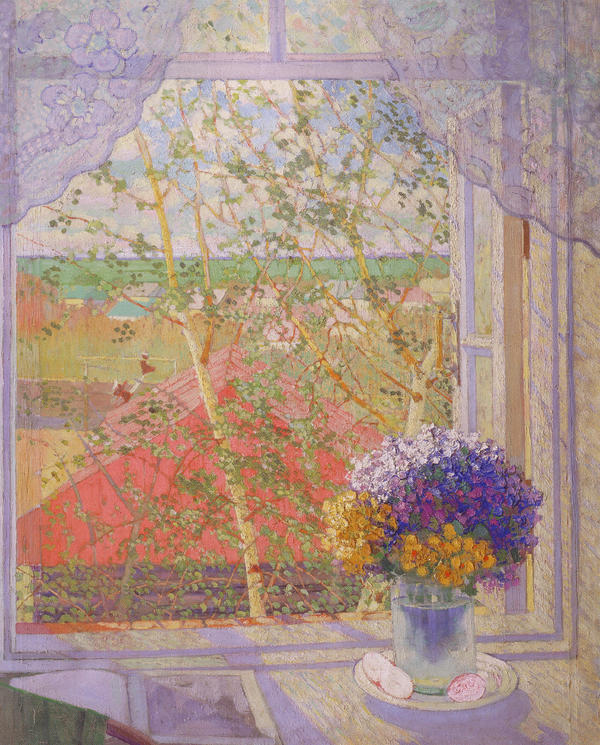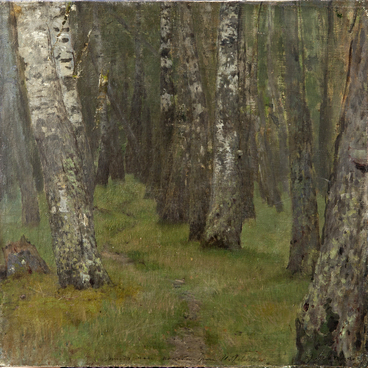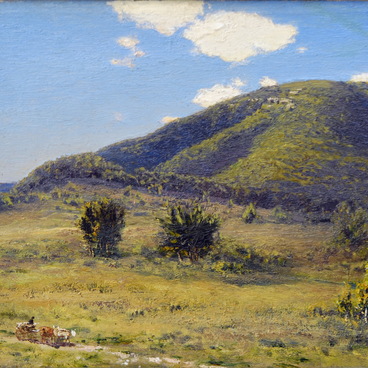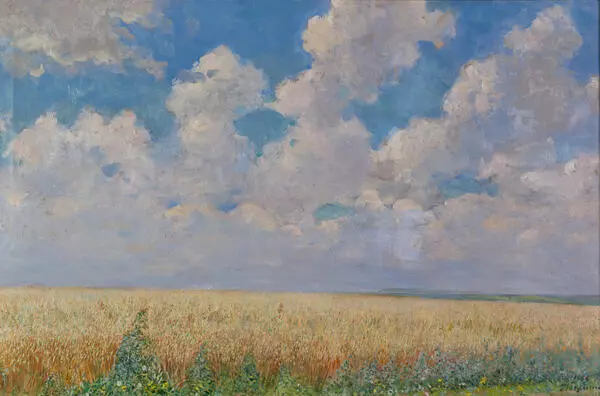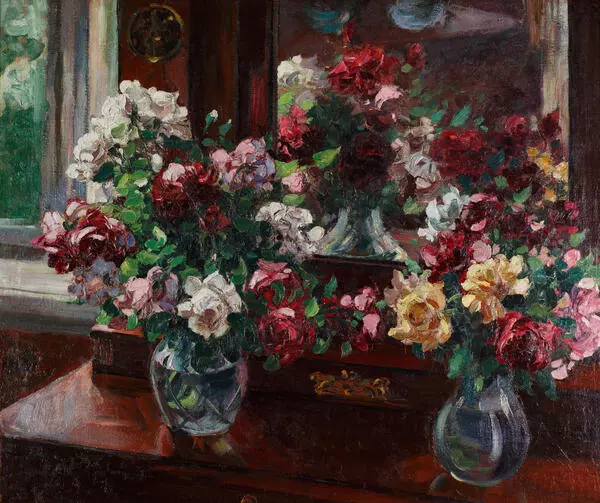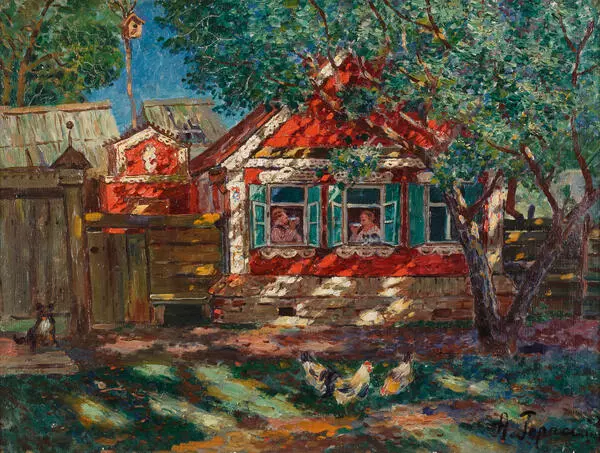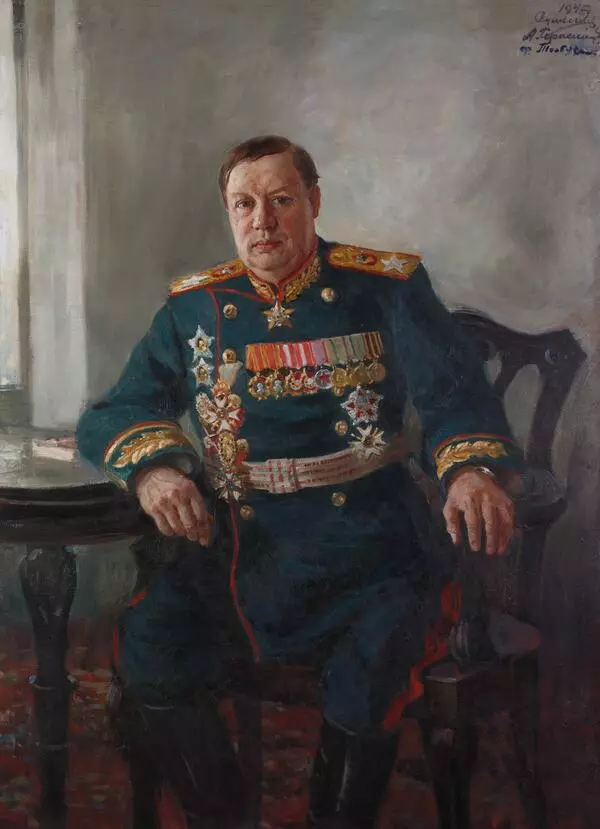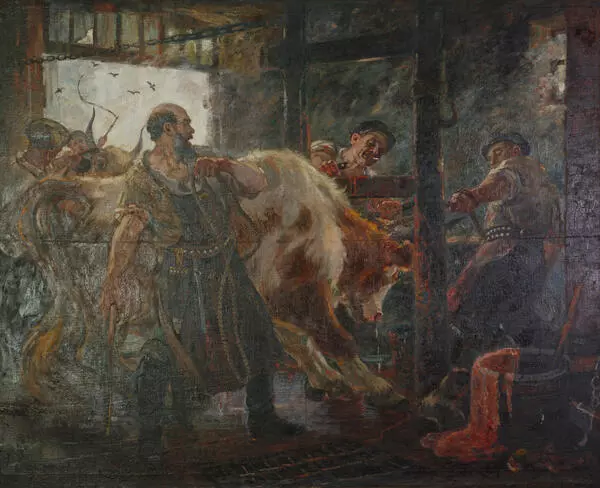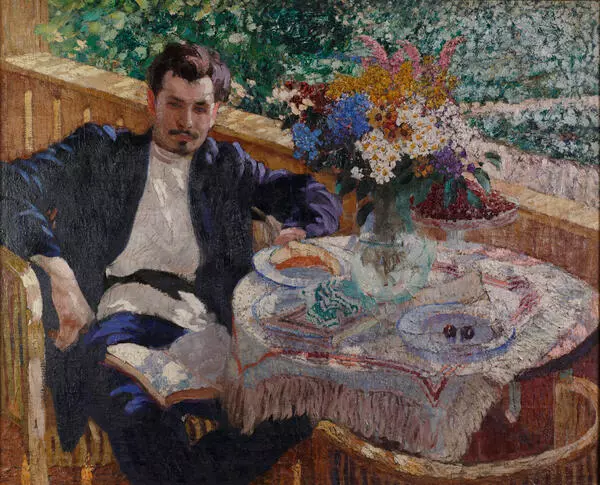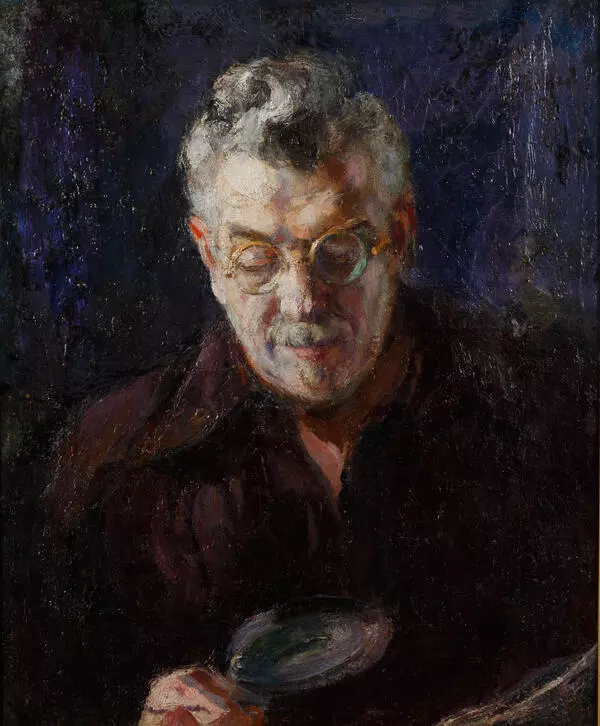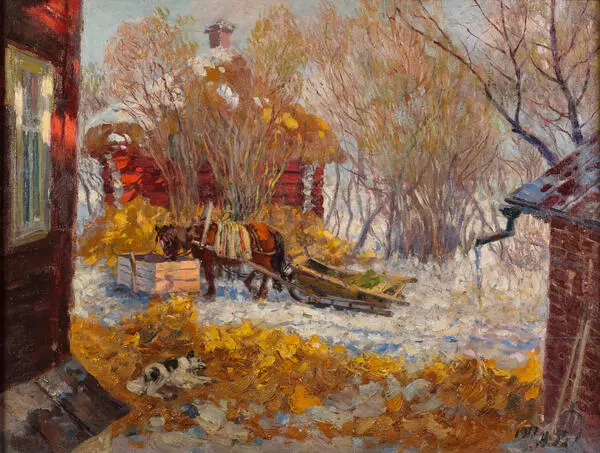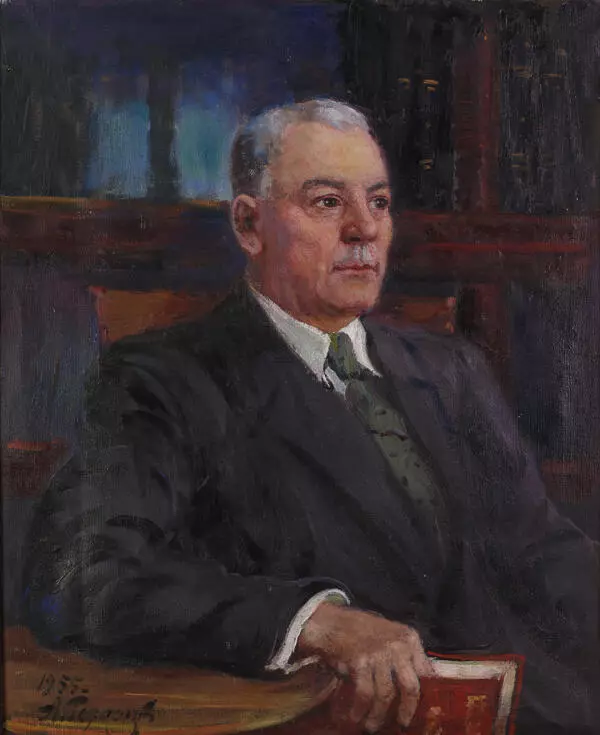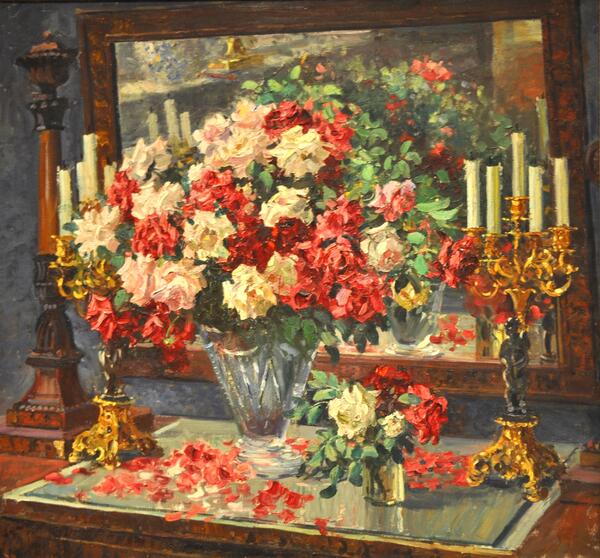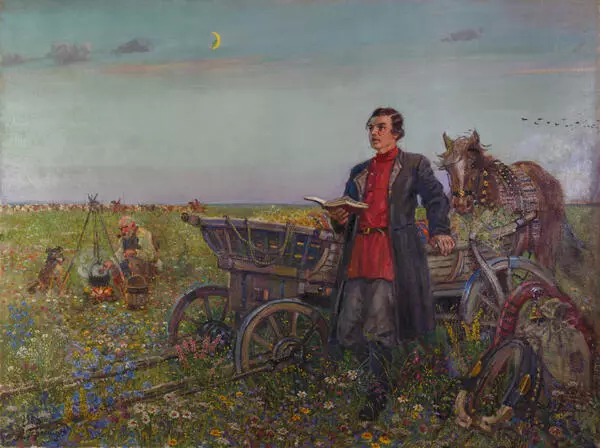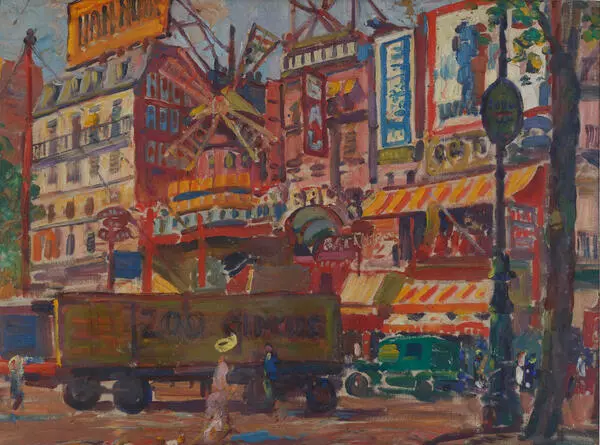The collection of Stavropol Krai Museum of Fine Arts has two paintings of the People’s Artist of the Soviet Union Alexander Gerasimov — still life Bouquet of Flowers. Window, painted in 1914 and Portrait of Dzerzhinsky created in 1933. The paintings were created 20 years apart. Comparing them, researchers note a dramatic contrast in the manner of the artist who worked in the same country but in different historic periods. Bouquet of Flowers is one of the few still life paintings in the collection of pre-revolutionary Russian art.
Gerasimov painted Bouquet of Flowers when he studied in Moscow School of Arts, Sculpture and Architecture. This painting was strongly influenced by the artist’s interest in — the style where the main idea was not to draw an object accurately but attempt to convey the impression of it. In his early period, Gerasimov made many landscape sketches and still life paintings conveying such an impression. His studies had a lot of fresh air and bright rich colors that later became part of his unique style.
The author portrays a bouquet of flowers in a glass can with water standing on a window sill. One can see a spring landscape in a widely open window: the sky with light clouds, the bright line of fields stretching to the horizon, tree trunks with fresh bright leaves, roofs of houses colored with the sun. The lightness and transparency are continued in the muslin window curtain and the still life on the window sill: an open book is sitting next to the can with flowers.
After the October Revolution ‘the best singer of spring’ as Gerasimov was called by the writer and journalist Vladimir Gilyarovsky, joined the creation of an artistic policy of the new state. As the artist developed in the genre of socialist realism, his artistic talent, lively and bright manner of painting and rich colors acquired ceremonial glamor. Gerasimov went down in the history of the Soviet art as a painter strongly committed to the principles of socialist realism. He became a prominent master of ceremonial portrait and landscape conveying the pathos of the Soviet epoch, the optimism and new world outlook of Soviet people.
Gerasimov painted Bouquet of Flowers when he studied in Moscow School of Arts, Sculpture and Architecture. This painting was strongly influenced by the artist’s interest in — the style where the main idea was not to draw an object accurately but attempt to convey the impression of it. In his early period, Gerasimov made many landscape sketches and still life paintings conveying such an impression. His studies had a lot of fresh air and bright rich colors that later became part of his unique style.
The author portrays a bouquet of flowers in a glass can with water standing on a window sill. One can see a spring landscape in a widely open window: the sky with light clouds, the bright line of fields stretching to the horizon, tree trunks with fresh bright leaves, roofs of houses colored with the sun. The lightness and transparency are continued in the muslin window curtain and the still life on the window sill: an open book is sitting next to the can with flowers.
After the October Revolution ‘the best singer of spring’ as Gerasimov was called by the writer and journalist Vladimir Gilyarovsky, joined the creation of an artistic policy of the new state. As the artist developed in the genre of socialist realism, his artistic talent, lively and bright manner of painting and rich colors acquired ceremonial glamor. Gerasimov went down in the history of the Soviet art as a painter strongly committed to the principles of socialist realism. He became a prominent master of ceremonial portrait and landscape conveying the pathos of the Soviet epoch, the optimism and new world outlook of Soviet people.

